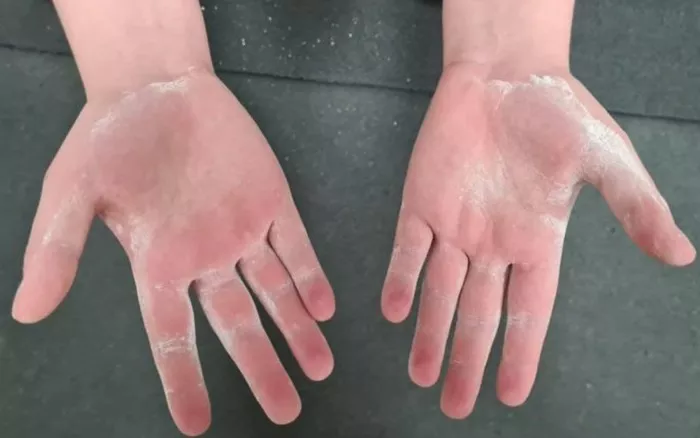Rock climbing is an exhilarating and physically demanding sport that often pushes climbers to their limits. However, one common issue that can detract from the experience is blisters. These painful skin irritations can make climbing uncomfortable and hinder performance. This article will provide a comprehensive guide on how to treat blisters from rock climbing, ensuring you can get back on the wall quickly and safely.
Understanding Blisters: Causes and Prevention
What Causes Blisters?
Blisters are caused by friction, which generates heat and damages the skin layers. When climbing, repetitive movements and the constant pressure from climbing shoes and grips can cause blisters to form on your hands and feet. Factors such as poorly fitting shoes, sweaty hands, and rough surfaces can exacerbate the problem.
Prevention Strategies
Preventing blisters is the first step to ensuring a comfortable climbing experience. Here are some effective strategies:
Proper Footwear: Invest in well-fitted climbing shoes. Avoid shoes that are too tight or too loose, as both can cause friction and blisters.
Hand Care: Use climbing chalk to keep your hands dry and reduce friction. Regularly file down calluses to prevent them from becoming too thick and prone to blistering.
Taping: Pre-tape common blister areas with athletic tape or specialized blister tape to reduce friction.
Skin Care: Keep your skin moisturized but not overly soft. Hydrated skin is more resilient to friction.
Immediate Treatment for Blisters
Cleaning and Protecting the Area
If you develop a blister, it’s crucial to treat it promptly to prevent infection and further damage.
Clean the Area: Gently clean the blister with soap and water to remove dirt and bacteria.
Antiseptic Application: Apply an antiseptic solution to prevent infection.
Protection: Cover the blister with a sterile bandage or blister pad to protect it from further friction and contamination.
Draining Blisters
In some cases, large or painful blisters may need to be drained to relieve pressure.
Sterilize a Needle: Use a sterilized needle to puncture the blister at its edge.
Drain the Fluid: Gently press on the blister to drain the fluid. Do not remove the skin covering the blister, as it protects the underlying tissue.
Apply Antiseptic: After draining, apply an antiseptic and cover the area with a sterile bandage.
Advanced Blister Care Techniques
Using Moleskin and Padding
For climbers who experience recurrent blisters, moleskin and padding can provide additional protection.
Cut and Apply Moleskin: Cut a piece of moleskin to fit around the blister, with a hole in the center to avoid pressure on the blister itself.
Additional Padding: Use gel pads or foam padding to cushion the affected area, reducing friction during climbs.
Specialized Blister Products
Several products on the market are designed specifically for blister care and prevention.
Blister Bandages: Hydrocolloid blister bandages create a protective barrier and promote healing.
Liquid Bandages: These can form a protective layer over the blister and are especially useful for smaller blisters or those in hard-to-bandage areas.
Antifriction Balms: Applied to blister-prone areas, these balms reduce friction and prevent blisters from forming.
see also: How Do Rock Climbing Competitions Work?
Long-Term Blister Management
Building Resilience
Developing tougher skin over time can help prevent blisters.
Gradual Exposure: Gradually increase climbing intensity to allow your skin to toughen.
Regular Hand and Foot Care: Maintain a routine of moisturizing, filing calluses, and protecting sensitive areas.
Adjusting Climbing Techniques
Improving your climbing technique can also reduce the risk of blisters.
Grip Variation: Vary your grip to distribute pressure evenly across your hands.
Foot Placement: Practice precise foot placements to minimize unnecessary movement and friction.
When to Seek Medical Attention
Signs of Infection
While most blisters can be treated at home, it’s essential to be aware of signs of infection that require medical attention.
Redness and Swelling: Increased redness, swelling, or warmth around the blister.
Pus or Discharge: The presence of pus or unusual discharge.
Persistent Pain: Pain that does not improve with standard blister care.
Professional Treatment Options
If you experience severe or recurrent blisters, consulting a healthcare professional can provide additional treatment options.
Prescription Medications: Antibiotics for infected blisters or topical treatments to promote healing.
Custom Orthotics: For persistent foot blisters, custom orthotics can help distribute pressure more evenly.
Summary
Blisters are a common but manageable issue for rock climbers. By understanding the causes and implementing effective prevention strategies, you can minimize their occurrence. When blisters do form, prompt and proper treatment can prevent complications and get you back to climbing quickly. Remember, taking care of your skin is as important as honing your climbing skills.
FAQs:
How can you prevent blisters from rock climbing?
To prevent blisters, ensure you have well-fitted climbing shoes, use climbing chalk to keep hands dry, pre-tape common blister areas, and maintain good skin care by moisturizing and managing calluses.
Is it safe to pop a blister?
Yes, it is safe to drain a blister if it is large or painful. Use a sterilized needle to puncture the blister at its edge and gently drain the fluid. Apply antiseptic and cover the area with a sterile bandage afterward.
What should you do if your blister gets infected?
If your blister shows signs of infection, such as increased redness, swelling, warmth, pus, or persistent pain, seek medical attention. A healthcare professional may prescribe antibiotics or other treatments.
Are there any specialized products for blister prevention?
Yes, several specialized products can help prevent blisters, including hydrocolloid blister bandages, liquid bandages, and antifriction balms.
How can you toughen my skin to prevent blisters?
Gradually increase climbing intensity to allow your skin to toughen, and maintain a routine of moisturizing, filing calluses, and protecting sensitive areas to build skin resilience.
By following these guidelines and being proactive in your blister care, you can enjoy rock climbing without the discomfort and interruptions caused by blisters.
related topics:
- Why Is Rock Climbing So Expensive
- What Is A Carabiner Used For In Rock Climbing
- How Do Rock Climbing Anchors Work?

